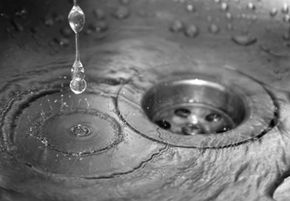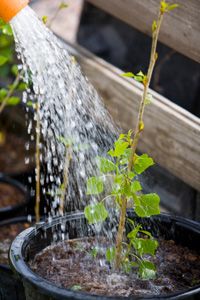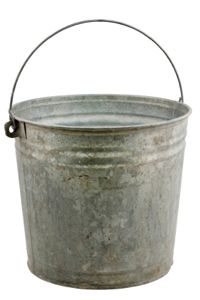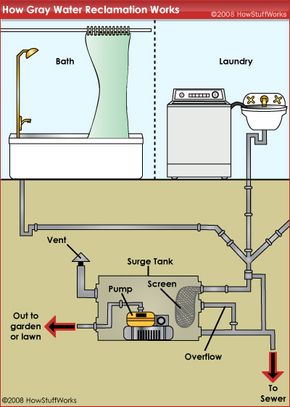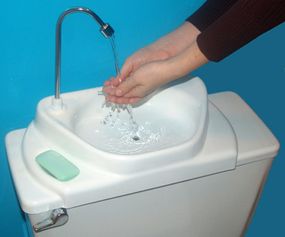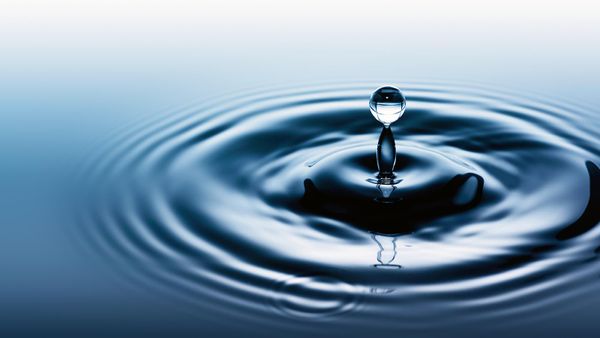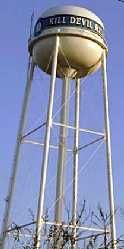Most methods of gray water reclamation, from lugging around a full bucket to diverting the water through a costly treatment system, involve a simple cycle:
- White water is pumped into the home and is used in showers, bathtubs, sinks, dishwashers, laundry rooms and toilets.
- White water that comes into contact with human waste becomes black water; the rest becomes reusable gray water.
- Gray water is reused for domestic purposes when appropriate. Black water is sent into a septic tank or sewage system, along with any unused gray water.
When pipes are used to divert gray water, take care to prevent pumps and filters from clogging with bits of hair, skin and food. When clogs do occur, it is worth remembering that chemical clog removers are just the kind of harsh chemicals you don't want to send directly into your garden. Natural solutions, such as boiling water or vinegar and baking soda treatments, might be less damaging to plant life. Additional safety precautions often depend on the specifics of the reclamation system in place, desired vegetation and the home's residents. Gray water laws also vary from place to place. This issue will be discussed later.
Three basic gray water reclamation systems are commonly used. The main differences involve the scope, complexity and cost of the reclamation process.
Manual bucketing
The most low-tech system of gray water reclamation, manual bucketing is exactly what it sounds like. You simply drain your gray water directly into portable containers that you can use to water lawns, gardens and potted plants. The process can be as simple as taking an empty bucket in when you shower, then watering a tree with the gray water you collected.
The irrigation can still be tricky, though. Make sure you evenly distribute gray water among your desired plants and that the water does not pool on the surface or run off the property.
Simply pumping gray water out onto the lawn would be potentially hazardous. But the small quantities of gray water involved in manual bucketing and the hands-on, human discretion make watering on the surface a viable option.
Diversion
Basically a more permanent, hands-free approach to gray water reclamation, the diversion method takes the principals of manual bucketing and lets the plumbing do most of the work. Instead of manually lugging the gray water left over from a bath to the garden, a diversion system drains gray water directly from your bathtub and distributes it outside.
As the diversion system involves the use of more water than manual bucketing and is typically a more independent and hands-free system, subsurface irrigation is used to evenly distribute gray water. Otherwise, gray water pooling on the surface or running off the property could result in building damage, bad odors, mosquitoes and even pollution.
Treatment
Potentially the most expensive method of gray water reclamation, the treatment method takes the diversion system one step further by routing gray water through a treatment system that cleanses the water -- sometimes enough to be safely stored or used to flush toilets inside the home. Simpler systems employ a physical filtration system, but more advanced systems further remove contaminants through the use of chemical treatment. Chemical treatment basically involves another level of breaking down contaminated water, only on a much smaller scale. More than a dozen different varieties of chemicals are used to treat waste. Some chemicals specialize in killing harmful microorganisms; others break down various unwanted chemicals within the mix. The downside to these systems is that the cost involved can easily place gray water treatment outside the budgets of most households for the foreseeable future.
To further understand the diversion and treatment systems, we'll take a look at just how gray water is piped out from the drain and into the garden in the next section.
